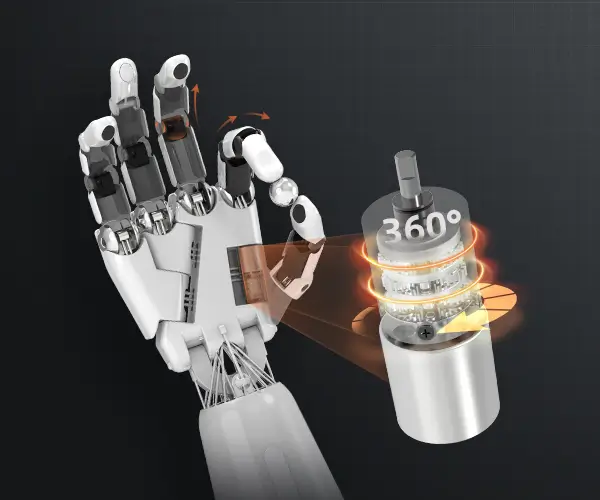Sure! Here is the first part of the soft article on "dc motor and gearbox."
Unlocking Power and Precision: The Magic of DC Motors and Gearboxes
In a world driven by technology, the silent engines powering our daily lives often go unnoticed—yet they are at the heart of countless innovations shaping our future. Among these, dc motors combined with gearboxes stand out as versatile, reliable, and remarkably efficient devices capable of transforming electrical energy into controlled mechanical motion with precision. From the tiny servo motors inside drones to large industrial machinery, their application is ubiquitous, and understanding their synergy unlocks a new level of engineering excellence.

The Foundation of Dynamic Motion: What Is a DC Motor?
At its core, a dc motor is an electro-mechanical device that converts direct current electrical energy into rotational motion. Unlike alternating current systems, dc motors offer excellent control over speed and torque, making them a favorite choice in applications requiring variable speed or precise positioning.
The fundamental operation involves magnetic fields and current-carrying conductors. When electrical current flows through the windings of the motor, it generates a magnetic field. This interacts with the magnetic field of the stator (the stationary part), producing a force that causes the rotor (the rotating part) to turn. Simple yet sophisticated, this process allows for a smooth and predictable rotational motion.
The popularity of dc motors stems from their simplicity and adaptability. They come in various types—brushed, brushless, coreless, and more—each suited to different applications. Brushed dc motors, for instance, are cost-effective and easy to control, while brushless variants offer higher efficiency and durability—all crucial depending on the specific needs of the project.
The Power of Gearboxes: Why They Are Indispensable
While dc motors provide the energy, they are often paired with gearboxes to optimize performance. A gearbox is a mechanical assembly that reduces (or sometimes increases) the speed of the motor's output while increasing torque—think of it as a translator that adjusts the motor’s raw power to meet specific operational demands.
Imagine a bicycle gear system: shifting gears allows you to pedal more easily uphill or go faster on flat terrain. Similarly, gearboxes modify the motor’s output to suit the application—whether you need slow but powerful movement or high-speed rotation.
Gearboxes are constructed from a series of gears—usually spur gears, helical gears, planetary gears, or worm gears—each tailored for particular characteristics such as efficiency, load capacity, and gear ratio. For example, planetary gearboxes excel in delivering high torque in compact forms, making them ideal for robotics or aerospace applications.
Their objectives go beyond just reducing speed: gearboxes also help improve the precision of movement, dampen vibrations, and protect the motor from overloads. This combination of dc motor and gearbox forms the backbone of modern automation systems.
Pairing Precision with Power
The symbiotic relationship between a dc motor and gearbox enables control over the motion's speed, torque, and position—critical aspects in many fields. In robotics, for instance, precise motor control ensures the delicate handling of objects or accurate movements. In industrial conveyor systems, the right gear ratio optimizes throughput without sacrificing energy efficiency.
Moreover, advances in gear design—such as high-precision gears with minimal backlash—have dramatically improved the accuracy of these systems. This is especially vital in applications involving CNC machines or camera autofocus systems where micro-movements make a big difference.
The Driving Factors Behind Choosing a DC Motor-gearbox Combo
Deciding on the right combination hinges on a few key factors:
Application requirements: Does the device need high rotational speed or high torque? Precision or durability? Understanding these needs directs the choice of motor size and gear ratio. Power consumption: Efficient systems save energy and reduce costs—critical in battery-powered devices. Size constraints: Miniaturized drones or medical devices demand compact gearboxes with high performance. Environmental conditions: Corrosive environments or extreme temperatures influence material choices and protective measures.
Innovations and Future Trends
The evolution of dc motor and gearbox technology continues at a rapid pace. Brushless dc motors, with their higher efficiency and lower maintenance, are increasingly common in consumer electronics and renewable energy systems. Meanwhile, modular gearboxes allow for customizable and scalable solutions, reducing development time.
Smart systems integrating sensors with the motor-gearbox assembly enable real-time feedback and adaptive control, a cornerstone in robotics, autonomous vehicles, and IoT applications. Such integration leads to smarter, more autonomous machines capable of complex tasks with minimal human intervention.
In the near future, emerging materials and manufacturing techniques—like additive manufacturing and nanotechnology—aim to create lighter, stronger, and more efficient gear systems. Think of ultra-compact, high-torque gearboxes built with 3D-printed components that could revolutionize portable devices.
Kpower has delivered professional drive system solutions to over 500 enterprise clients globally with products covering various fields such as Smart Home Systems, Automatic Electronics, Robotics, Precision Agriculture, Drones, and Industrial Automation.




































